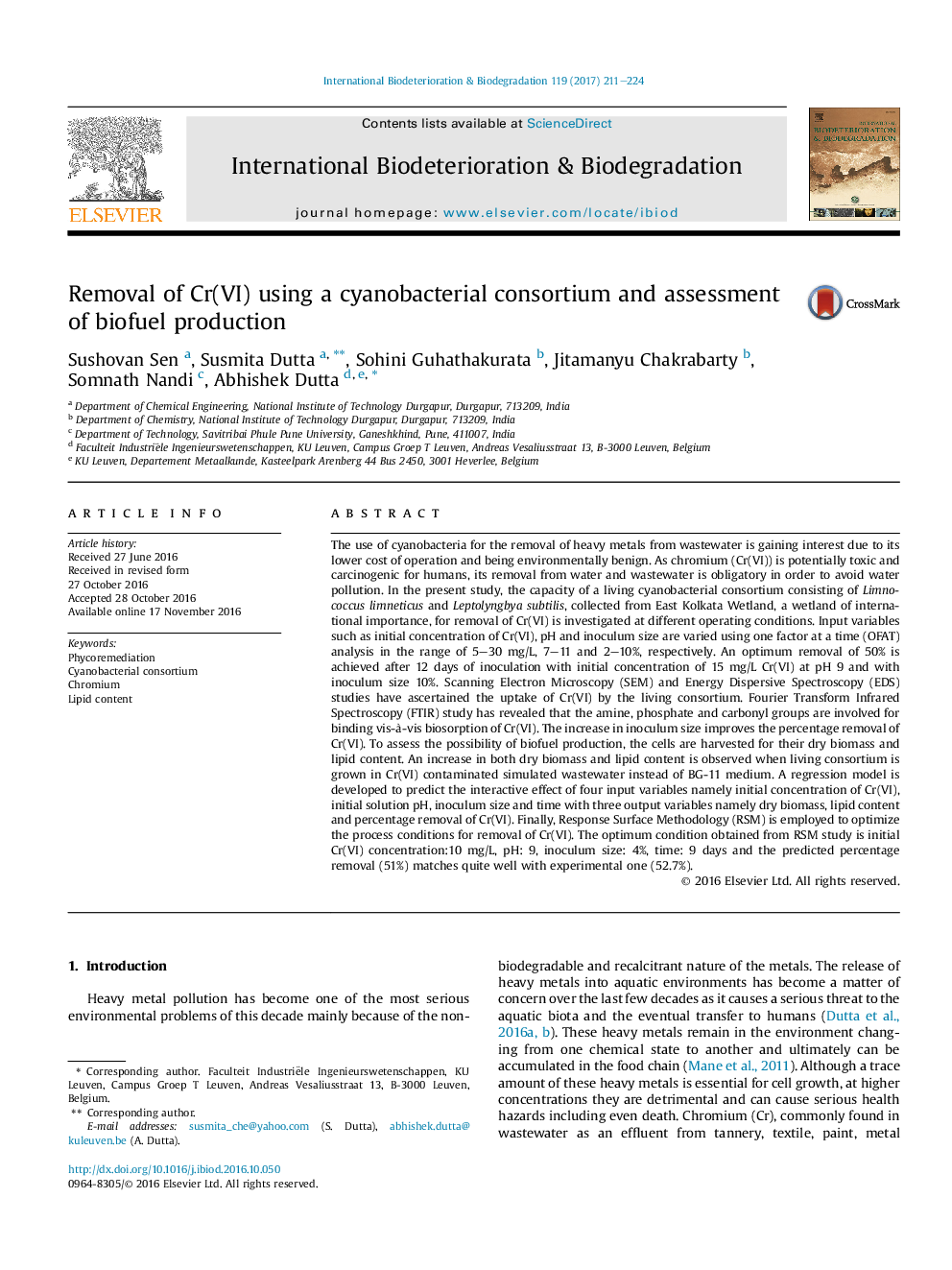| کد مقاله | کد نشریه | سال انتشار | مقاله انگلیسی | نسخه تمام متن |
|---|---|---|---|---|
| 5740448 | 1616298 | 2017 | 14 صفحه PDF | دانلود رایگان |

- Live cyanobacterial consortium has been used for the removal of Cr(VI).
- The microbial consortium consists of Limnococcus sp. and Leptolyngbya sp.
- OFAT and RSM analyses have been done to see the effect of input parameters.
- Dry biomass and lipid content have been found to be higher when grown in wastewater.
The use of cyanobacteria for the removal of heavy metals from wastewater is gaining interest due to its lower cost of operation and being environmentally benign. As chromium (Cr(VI)) is potentially toxic and carcinogenic for humans, its removal from water and wastewater is obligatory in order to avoid water pollution. In the present study, the capacity of a living cyanobacterial consortium consisting of Limnococcus limneticus and Leptolyngbya subtilis, collected from East Kolkata Wetland, a wetland of international importance, for removal of Cr(VI) is investigated at different operating conditions. Input variables such as initial concentration of Cr(VI), pH and inoculum size are varied using one factor at a time (OFAT) analysis in the range of 5-30Â mg/L, 7-11 and 2-10%, respectively. An optimum removal of 50% is achieved after 12 days of inoculation with initial concentration of 15Â mg/L Cr(VI) at pH 9 and with inoculum size 10%. Scanning Electron Microscopy (SEM) and Energy Dispersive Spectroscopy (EDS) studies have ascertained the uptake of Cr(VI) by the living consortium. Fourier Transform Infrared Spectroscopy (FTIR) study has revealed that the amine, phosphate and carbonyl groups are involved for binding vis-Ã -vis biosorption of Cr(VI). The increase in inoculum size improves the percentage removal of Cr(VI). To assess the possibility of biofuel production, the cells are harvested for their dry biomass and lipid content. An increase in both dry biomass and lipid content is observed when living consortium is grown in Cr(VI) contaminated simulated wastewater instead of BG-11 medium. A regression model is developed to predict the interactive effect of four input variables namely initial concentration of Cr(VI), initial solution pH, inoculum size and time with three output variables namely dry biomass, lipid content and percentage removal of Cr(VI). Finally, Response Surface Methodology (RSM) is employed to optimize the process conditions for removal of Cr(VI). The optimum condition obtained from RSM study is initial Cr(VI) concentration:10Â mg/L, pH: 9, inoculum size: 4%, time: 9 days and the predicted percentage removal (51%) matches quite well with experimental one (52.7%).
Journal: International Biodeterioration & Biodegradation - Volume 119, April 2017, Pages 211-224